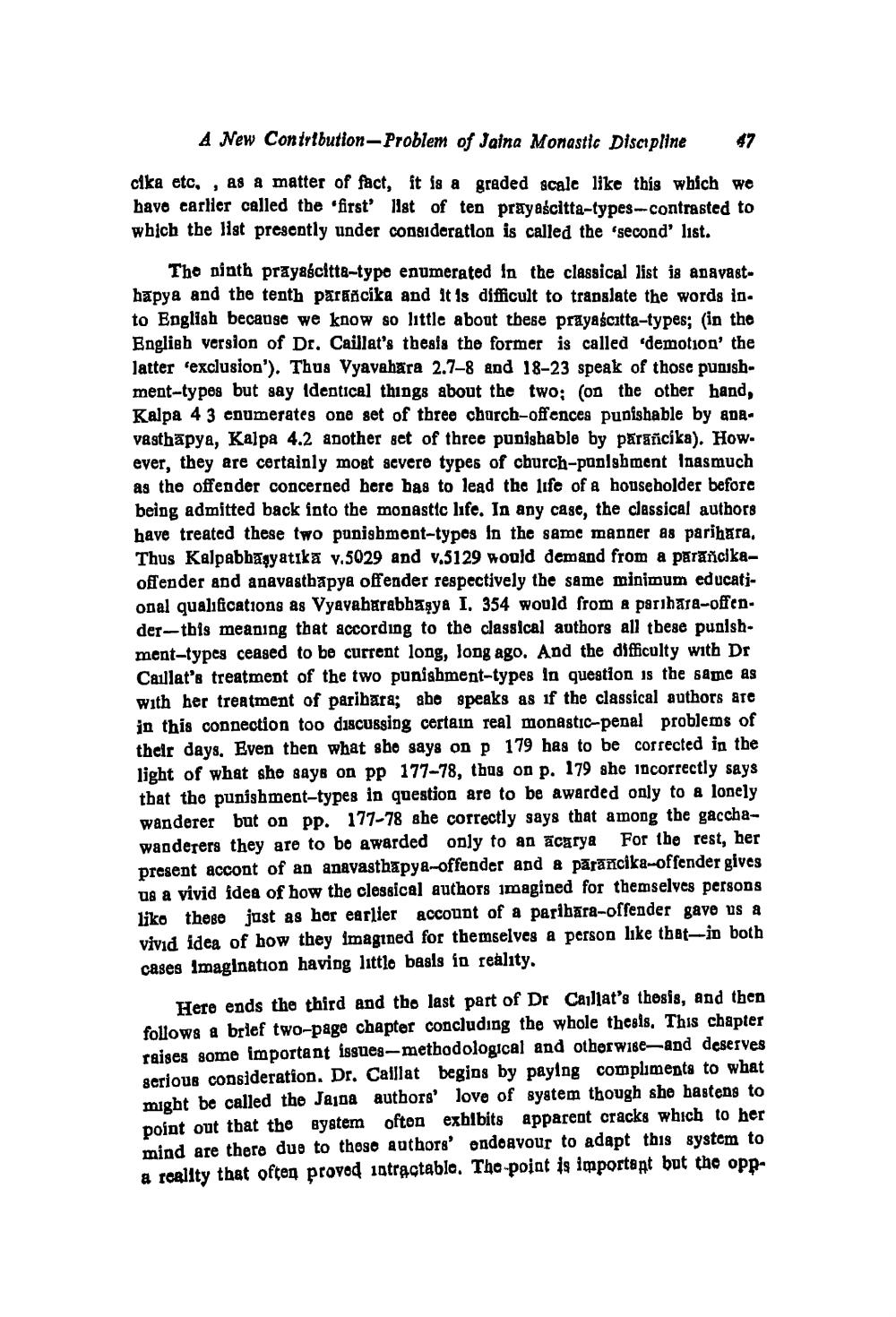________________
A New Contribution-Problem of Jaina Monastic Discipline
47
cika etc, , as a matter of fact, it is a graded scale like this which we bavo earlier called the first' Het of ten prayascitta-types-contrasted to which the list presently under consideration is called the 'second' list.
The ninth prayascltta-type enumerated in the classical list is an avasthapya and the tenth parancika and it is difficult to translate the words in. to English becanse we know so little about these prayascitta-types; (in the English version of Dr. Caillat's thesis the former is called 'demotion' the latter 'exclusion'). Thus Vyavahara 2.7-8 and 18-23 speak of those punishment-types but say identical things about the two; (on the other hand, Kalpa 43 enumerates one set of three church-offencea punishable by anavasthāpya, Kalpa 4.2 another set of three punishable by parañcika). However, they are certainly moat severe types of church-ponishment inasmuch as the offender concerned here bas to lead the life of a householder before being admitted back into the monastic life. In any case, the classical authors have treated these two punishment-types in the same manner as parihara, Thus Kalpabbaşyatika v.5029 and v.5129 would demand from a parancikaoffender and anavasthapya offender respectively the same minimum educational qualifications as Vyavabarabbaşya I. 354 would from & parihara-offen. der--this meaning that according to the classical authors all these punishment-types ceased to be current long, long ago. And the difficulty with Dr Caillat's treatment of the two punishment-types In question is the same as with her treatment of paribara; she speaks as if the classical authors are in this connection too discussing certain real monastic-penal problems of their days. Even then what she says on p 179 has to be corrected in the light of what she says on pp 177-78, thug on p. 179 she incorrectly says that the punishment-types in question are to be awarded only to a lonely wanderer but on pp. 177-78 she correctly says that among the gacchawanderers they are to be awarded only to an acarya For the rest, her present accont of an anayasthapya-offender and a pārancika-offender gives us a vivid idea of how the clessical authors imagined for themselves persons liko these just as hor earlier account of a paribara-offender gave us a vivid idea of how they imagined for themselves a person like that-in both cases Imagination having little basis in reality.
Here ends the third and the last part of Dr Caillat's thesis, and then follows a brief two-page chapter concluding the whole thesis. This chapter raises some important issues-methodological and otherwise- and deserves serious consideration. Dr. Caillat begins by paying compliments to what might be called the Jajna authors' love of system though she bastens to point out that the system often exhibits apparent cracks which to her mind are there due to those authors' endeavour to adapt this system to a reality that often provod intractable. The point is important but the opp




